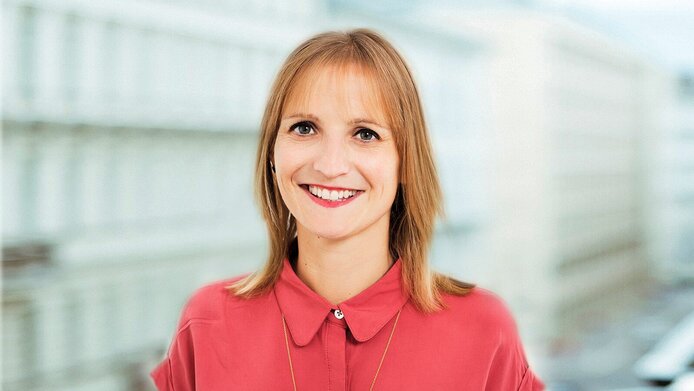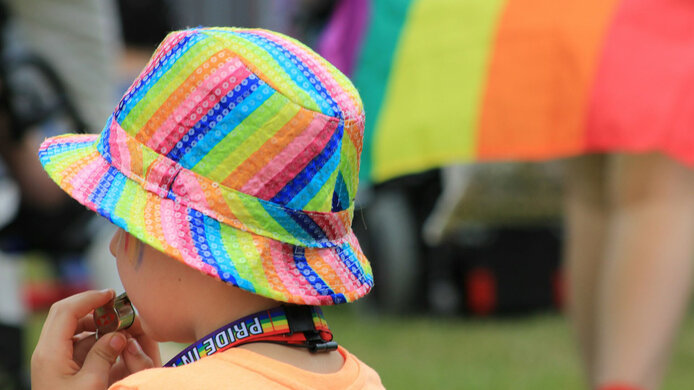How rainbow families experience daily life

The families of children with LGBTIQ+ parents are characterized by great diversity in terms of parenthood, parental roles and family constellations. In Austria, the past decade saw several legislative changes that have had a profound impact on this diversification. Supreme Court rulings have legalized various ways for LGBTIQ+ individuals to start a family, including registered partnerships and marriage, adoption, as well as medically assisted reproduction.
It was presumably due to these developments that increasing numbers of children are growing up in families with LGBTIQ+ parents. Non-representative surveys demonstrate that 11 to 16% of LGBTIQ+ individuals in Austria are parents of one or more children. It is particularly bisexual men (35%), transgender individuals (23%) and lesbian and bisexual women (15%) who take on parental responsibilities. According to surveys from Germany, 74% of lesbian and gay people would like to be parents.
Psychologist Martina Zemp from the University of Vienna understands these figures as evidence of the need for developing a better understanding of these family forms, as she explains in the interview below. With funding from the Austrian Science Fund FWF she is embarking on a long-term study over the next three years. She will collect the first comprehensive data on resilience and risk factors in rainbow families in Austria, using three age cohorts of children and a participatory research approach.
Personal details
Martina Zemp is Professor of Clinical Psychology of Childhood and Adolescence at the University of Vienna. Her research focuses on family risk factors and protective factors in child development and the importance of family relationships for the psychological well-being of children and adolescents.
PRIDE MONTH 2024
Ms. Zemp, in what way does the situation of children and adolescents in rainbow families differ from that of young people growing up in “traditional” families?
Martina Zemp: We know from previous research that their minority status exposes LGBTIQ+ individuals to additional psychological stress. These groups know stressors that are specific and chronic and originate in societal conditions. On the one hand, we are talking about social or structural inequalities that affect the entire minority group. But people from these families are also exposed to individual experiences, which can involve minor instances of disrespect and nastiness, but also discrimination and hatred or even open aggression and criminal acts. The studies that have already been carried out in this field mainly focus on adults, regardless of their parental status. Minority stress does, however, affect the family on many levels. It affects LGBTIQ+ people in their parental role and also has an impact on the children.
At the same time, studies show that the child's welfare does not depend on the gender orientation of the parents.
Zemp: That's correct. Earlier research focused mainly on comparisons between children in rainbow families and children from “biological nuclear families”, as the latter was long considered the norm. Today, it has become very clear that, on average, there is no difference between these two groups. There are even areas in which children from rainbow families are stronger (more resilient) and more advanced in their development, for instance in terms of social justice, gender roles and diversity. These are aspects the children experience first-hand in their families, as the parents often have a more balanced division of roles and responsibilities. This is why many children are also very proud to be a member of a rainbow family.
This research has contributed significantly to the achievements of the legal system. On the other hand, it meant that researchers have long been guided by socio-political issues. That focus did not consider the differences within this group of rainbow families, which are very diverse and function in very different ways. We, on the other hand, are not interested in how rainbow families differ from other family constellations, but rather in the resilience and risk factors that exist within this diverse group. Hardly any theories have been developed to date and we want to address that gap.
That’s why you have designed a research project, which is now being launched. What is the focus of the study?
Zemp: Our objective is a first-time investigation of the long-term development of rainbow families throughout Austria. We are interested in the risk factors, but also in the positive identity-related aspects for children and young people in LGBTIQ+ families that I already mentioned. There are different levels that we want to look at in this context: the parental level, the parents' partnership(s) and the family level. This has hardly ever been done like that before.
What steps are you going to take?
Zemp: We want to recruit around 150 rainbow families throughout Austria, each with at least one child between the ages of 2 and 17, which we'll divide into three age cohorts. Our definition of rainbow family includes all families in which at least one parent identifies as LGBTIQ+. This gives us a broader definition, but one that is much closer to reality than previous studies, which often saw rainbow families in terms of only the “classic” constellation of mother-mother-child or father-father-child. For us, a parent is a person who assumes a parental role for a child regardless of their legal or biological kinship.
We will accompany the participating families for a good two years. While this is not an entire childhood, it will give us a relatively broad view of the different developmental stages of the children and the diversity within the rainbow families. We assign particular importance to demonstrating the diversity and wide variety of family constellations. Some of these are not always visible from the outside, for instance if one parent is bisexual and lives in a different-sex relationship, if someone is a single parent or if there is a transgender parent.
Which data are you particularly interested in?
Zemp: We will explore which positive and negative external aspects families are exposed to and thus gain insights into the daily life of the families. To do this, we will use a mix of methods including video observation, online surveys and modern statistics. We will invite some of the families to come to the university and do video recordings of how parents interact with each other and with their children. These observational data will then be systematically analyzed. The online questionnaires will also enable us to reach children and young people easily and ask developmentally sensitive questions in the various age groups.
The intersectional perspective is another important factor underlying our project. We collect data to analyze how inequalities at the interface between different privileged or marginalized identity dimensions can be mutually reinforcing or alleviating. Hence, we focus not only on sexual orientation and gender identities in families, but also on factors such as socio-economic status, migration background, health, education or income. We use machine learning methods in order to adequately map the intersectionality approach in statistical terms. The aspect that is at the heart of all these surveys is how the children are doing – mentally, physically, at school and in their social environment.
There is also a participatory approach in your study, what form does it take?
Zemp: Participatory research is becoming increasingly established in various disciplines and has also become an important new paradigm in psychology. The aim is to bring together the community, the study participants and relevant stakeholders with us researchers and involve everyone as equally as possible in the various stages of the research. In our project, one of the ways we do that is through a Community Advisory Board. This is a focus group made up of representatives and decision-makers from the LGBTIQ+ community, study participants and members of the project team. It will meet for the first time before we start the first wave of data to gather feedback on our planned methods. After each wave of data collection we'll then come together again to evaluate whether there is a need for improvements or changes.
The second important pillar of participatory research is to engage in communication with the general public. We plan events for all participating families and interested parties, which will enable us to reflect on the project in a broader context. Finally, the results of our study are to be incorporated into “ExploRALF”, which is an app we had programmed specially for the project. We want to reach as many people as possible in an easily comprehensible and interactive way in order to communicate the latest research findings.
What can this basic research project contribute from a socio-political perspective?
Zemp: Rainbow families are still largely invisible in Austria. Above all, they are underrepresented in the legal system, in research and in the media. This invisibility at the macro level reinforces their visibility at the micro level – at work and school, among friends and in their social environment. For members of rainbow families, it is often a matter of demonstrating that they are no different and function “just as well” as other families. With our scientifically sound collection of data, we want to contribute to reducing this imbalance and add another research dimension, since hitherto it had mostly concentrated on shortcomings. Only by making a point of not comparing rainbow families with heterosexual families can we help to increase their visibility and acceptance in the public eye.






